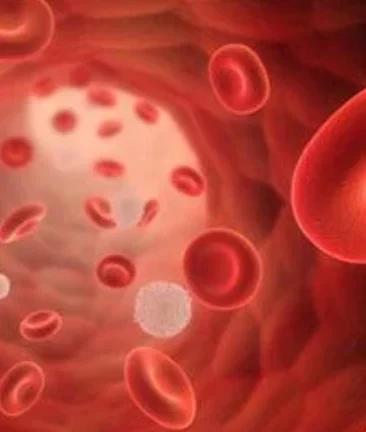TP53 Mutations Among Prognostic Factors Associated With Ibrutinib-Resistant CLL
Patients with chronic lymphocytic leukemia who are at an increased risk of failure on ibrutinib can be identified prior to treatment initiation using a 4-factor prognostic model and considered for a clinical trial.

Patients with chronic lymphocytic leukemia (CLL) who are at an increased risk of failure on ibrutinib (Imbruvica) can be identified prior to treatment initiation using a 4-factor prognostic model and considered for a clinical trial, according to a study published in the Journal of Clinical Oncology.
The presence of TP53 aberrations, prior treatment, ß-2 microglobulin (B2M) of 5 mg/L or greater, and lactate dehydrogenase (LDH) of greater than 250 U/L were found to be independently associated with inferior progression-free survival (PFS) and overall survival (OS) among 804 patients with CLL who were treated with ibrutinib.
The 4 factors contributed 1 point to a prognostic model that stratifies patients as having high- (3 to 4 points), intermediate- (2 points), and low-risk CLL (0 to 1 point).
“The proposed 4-factor model enables informed clinical decision making and patient counseling and can provide a platform for the investigation of risk-adapted treatment approaches,” lead investigator Inhye E. Ahn, MD, of the National Cancer Institute, and co-authors wrote in the study. “In clinical practice, the score can help set expectations, guide the frequency of monitoring, and direct patients to risk-adapted treatment approaches on the basis of the predicted risk of early progression.”
Additionally, Ahn and co-authors wrote that risk stratification could rapidly and clearly determine whether patients with higher-risk disease should be considered for novel treatments in clinical trials.
The study evaluated patients from a discovery data set. Overall, 720 patients from 5 industry-sponsored trials with CLL who were treated with ibrutinib were included in the data set. Patients were treated in a phase 1b/2 trial (NCT01105247), the phase 3 RESONATE trial (NCT01578707), the phase 3 RESONATE-2 trial (NCT01722487), the phase 2 RESONATE-17 trial (NCT01744691), or the phase 3 iLLUMINATE trial (NCT02264574).
The external validation cohort included data from 84 patients treated with ibrutinib monotherapy in a phase 2 trial (NCT01500733).
All trials uniformly tested ibrutinib-based therapy at a dose of 420 mg daily. Additionally, each trial had a median follow-up of more than 30 months.
The discovery data set was randomly divided into 2 cohorts: training (75%) and internal validation (25%). The National Institute of Health’s (NIH’s) 84-patient cohort was included as a separate cohort.
Among all patients, the median age was 68 years. More than half of patients (64.7%) were over the age of 65 years, and 65.4% of patients were male. Additionally, 56.2% of patients were Rai stage III or IV, and 58.7% of patients had relapsed/refractory CLL.
Overall, 45.6% of patients had a TP53 aberration, and 58.2% had unmutated IGHV. Of the TP53-positive patients (n = 367), 52% had a concurrent TP53 mutation and 17p deletion [del(17p)], 22% had a TP53 mutation (n = 60) or [del(17p); n = 21], and 26% had del(17p) with unknown TP53 status (n = 95) , and 1 patient had a TP53 mutation with unknown del(17p) status.
Although the majority of patients (55.5%) had missing data with regard to complex karyotype, 10.7% of patients had complex karyotype, defined by at least 3 genetic abnormalities in metaphase G-banding.
The median B2M was 4.4 (range, 0.9-37.7), with 34.3% of patients having B2M of 5 mg/L or greater. The median LDH was 233 (range, 40-3, 639) with 43.9% of patients having a level of greater than 250 U/L.
Moreover, 84% of patients received single-agent ibrutinib, and 16% of patients received ibrutinib with obinutuzumab (Gazyva).
In the NIH cohort, 62% of patients had treatment-naïve CLL and 63% had a TP53 mutation.
Overall, the median follow-up was 49 months. The median OS was not reached among the data set as a whole.
Univariable analysis revealed that 11 factors out of 18 baseline factors in the discovery cohort were associated with inferior OS and PFS. Multivariable analysis validated the 4 factors associated with decreased OS and PFS. Additionally, with each additional adverse factor present at baseline, the OS and PFS probability decreased (P < .001). Two supervised machine-learning methods confirmed the prognostic significance of the 4 factors.
From these findings, study investigators created an online calculator for the CLL 4-factor model that incorporated the presence of a TP53 aberration, relapsed/refractory CLL, high LDH, and high B2M.
Across all 3 cohorts, the 3-year PFS rates were 86.7% for low-risk disease, 73.9% for intermediate-risk disease, and 47.2% for high-risk disease. The 3-year OS rates were 92.6%, 82.9%, and 63%, respectively (P < .0001).
BTK and PLCG2 mutations are identified in approximately 80% of patients with CLL who develop resistance to ibrutinib. Oftentimes, these mutations are detectable months prior to clinical disease progression. In this study, the cumulative incidence for BTK and PLCG2 mutations was 50% for high-risk disease, 40% for intermediate-risk disease, and 17% for low-risk disease. Twenty percent of patients in the high-risk group experienced disease progression, often as Richter’s transformation, with no detectable mutations.
Across all risk groups, BTK/PLCG2 mutations were 3 times more common among patients with a TP53 mutation versus those without a TP53 mutation.
The proposed 4-factor model can provide insight into clinical decisions and patient counseling, according to Ahn and co-study authors.
These findings may shed light on the optimal course of action for patients with high-risk disease, where treatment intensification may be beneficial. Additionally, for low-risk patients who are able to receive ibrutinib, clinical trials are needed to evaluate doublet or triplet regimens based on targeted approaches, concluded the study authors.
Reference
- Ahn IE, Tian X, Ipe D, et al. Prediction of outcome in patients with chronic lymphocytic leukemia treated with ibrutinib: development and validation of a four-factor prognostic model. Published online October 7, 2020. J Clin Oncol. doi:10.1200/JCO.20.00979



